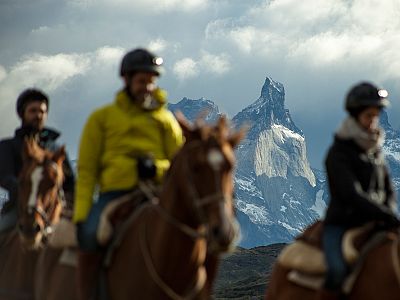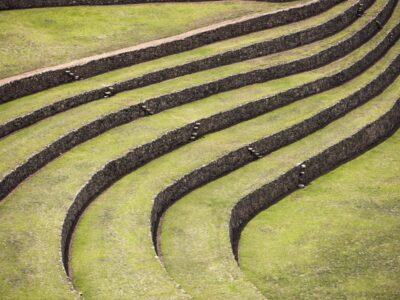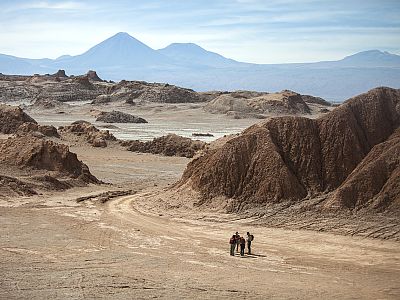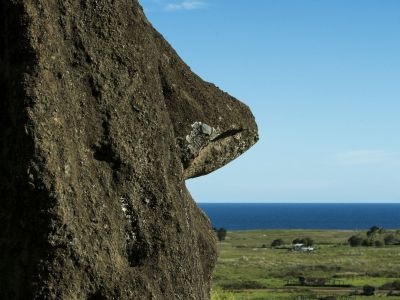Torres del Paine Conservation Reserve
On the north-eastern side of the Torres del Paine National Park, these two Patagonian Estancias are true expressions of Patagonian richness. They contain different ecosystems such as Magellan forest, pre-Andean scrubs, steppes, and Patagonian deserts. Two rivers wind up across the estancias, along with wetlands, lagoons, and other water bodies. The land is home to Patagonia’s Gauchos, who keep practicing their old traditions in their everyday life and welcome the visitor with the natural hospitality of a region bound by distance and solitude.
Over the last decades, our engagement and understanding of Patagonia reinforced our care for the territory and the people who belong and visit it. Its exceptional millenary landscapes, unique ecosystems, and local traditions are a world’s heritage that only sustainable conservation will preserve for present and future generations.
In 2019 we started our reserve journey by undertaking a comprehensive study of the Flora and Fauna, which delivered a detailed map of local species: around 130 types of plants, 50 types of birds and 15 species of mammals, including Darwin’s rheas, flamingoes, Condors, Armadillos, Guanacos, and Pumas. For this last iconic species, we installed trap cameras across our protected lands to better understand its presence and behavior in the area. The resident Gauchos of our estancias periodically check the cameras for new findings.
Discover Ownership Opportunities at Our Reserve
Explora’s Torres Del Paine Conservation Reserve offers a one-of-a-kind opportunity to own protected land in Patagonia at Explora’s 15,000-acre Torres Del Paine Conservation Reserve. Learn more about the benefits of membership in this special community, including opportunities to build your own home at our Reserve. Learn More.
Location
Located on the north-eastern side of the Torres del Paine National Park, this Explora Conservation Reserve is a true expression of Patagonian richness, it contains different ecosystems such as Magellan forest, pre-Andean scrubs, steppes, and Patagonian deserts. Between the Paine Horns and the Sierra Baguales, this is the only area in the region where you can spot both of those iconic landscapes at once, while also representing some of the most symbolic elements of the southern corner of the planet. The Zamora River and the Las Chinas river wind up across the estancias, along with wetlands, lagoons, and other water bodies. The land is home to wide range of animals, birds and varios endemic species which make this territory rich in biodiversity and great for exploration.
To plan your visit to the reserve, go to conservationreserves.org
Hectares
Total territory that will be legally protected by DRC (derecho real de conservación) so that it can be conserved in perpetuity.Forest
Total percentage of the land that is forest, out of this, 19% is native forest composed of Lenga and Ñirre.Flora Species
95 of those species are native, making 96% of the Flora in the Reserve endemic to the region.Fauna Species
The reserve is home to 40 species, among which the Puma and 33 types of birds stand out, including the Chilean Flamingo and the Southern Partridge.Gallery
About our Conservation Reserve
In the spirit of a traditional Estancias, the Reserve offers a unique opportunity to explore and conserve Patagonia’s essence. It is meant to be a living space where travelers, visitors, park rangers, guides, researchers and volunteers can support and participate in a wide range of exploration and conservation experiences.
-
As philanthropy often fades in the long run, we start a venture that joins the virtues of business enterprise and non-profit commitment. The design enables us to expand and accelerate conservation as well as project it in perpetuity.
The reserves’ territory retains 97% of its area only to exploration and conservation, while the remaining 3% is subject to developments that include tourism, leisure, research, and education. In the spirit of a traditional Estancias, the Reserve’s Hull congregates services and activities. From the Hull, a wide range of explorations will be available: both led by our guides with their distinctive training and knowledge, along with self-guided trails with exploration and conservation content supported by technology. Also, as the Gaucho tradition is alive at the Reserve, horse-riding explorations with them are living testimonies of the local way of life.
For the development of ecological planning, the Open Standards for Conservation methodology is used, which provides a complete and integrated methodological approach to strategic planning and conservation management, based on the adaptive management cycle. The Conservation Standards bring together common concepts, approaches, and terminology in conservation project and program design, management, and monitoring in order to help improve the practice of conservation.
Soon, we’ll have more details and will invite you to join our Reserves, where you will be able to participate as an owner, traveler, researcher, visitor, volunteer, or intern.
To plan your visit to the reserve, go to conservationreserves.org


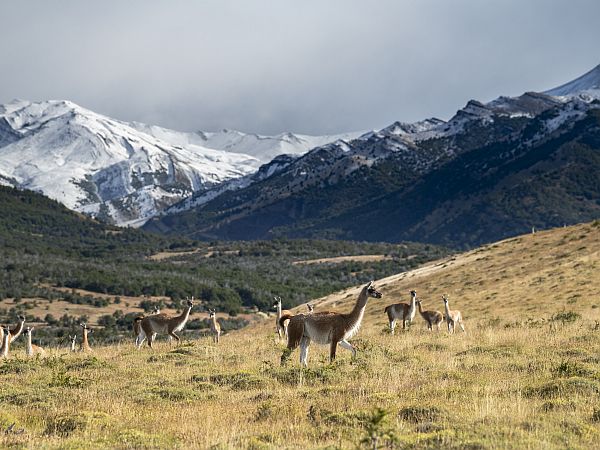
-
Located near the northeastern edge of the Torres del Paine National Park, The Torres del Paine Conservation Reserve is a majestic land in Patagonia's heart.
Between the Paine Horns and the Sierra Baguales, this is the only area in the region where you can spot both of those iconic landscapes at once, while also representing some of the most symbolic elements of the southern corner of the planet. This valley is situated in a geological stage with views and sights from any point you stand. Depending on the time of year, many wetlands form in the valley area. There’s also Jara Lagoon, a big body of water in the heart of the reserve, where you can usually spot wildlife, especially resident birds. The Rio de las Chinas river, which originates in the Andes, gives life to a branch known locally as the Zamora River that crosses the entire reserve and defines the landscape. The Steppe is a defining feature of the Patagonia landscape, and the Torres del Paine Explora Conservation Reserve is no exception. For decades, this region has seen the development of livestock within the communities, where the gauchos and animal keepers have traveled endlessly through these vast areas. Mountains flank part of the Steppe to then gives way to what is known locally as “La Vega”: a big patch of land, fertile enough to have grass year-round, especially on a rainy year. This area, for decades used for cattle grazing and livestock managing, has stopped such activities to forwarding our purpose of conservation.


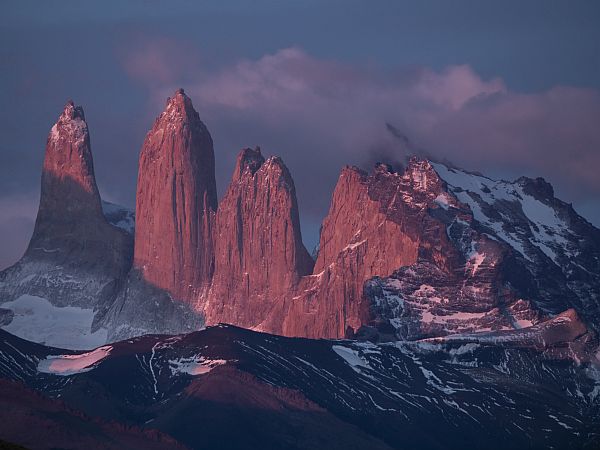
-
In this over 6000 hectare reserve, one can find Lenga's deep forests (Nothofagus pumilio) and Ñire (Nothofagus Antartica).
The strong winds have shaped these endemic trees, telling a story about the land, which also features a vast steppe landscape. You can appreciate the passage of time in the countryside. Some areas where the wind strikes mercilessly are close to barren, while others thrive and can give life to forests and shrub-like vegetation. The altitude and the proximity to mountain chains in the border with Argentina, give the reserve a unique advantage in protecting biodiversity.
A distinctive part of the vegetation landscape is the neneo (Anarthrophyllum desideratum), an endemic ball-shaped shrub, that can withstand extreme weather and direct wind. These shrubs, along with the lengas and grass, change colors and transform this area into a red and yellow stage. Some say it’s the most beautiful time of year to visit.
Many local species of fauna, especially birds, can be found here. Over a hundred resident bird species have been identified, making this reserve one of the richest in the biodiversity of its kind.
In the wetlands and Jara Lagoon, you can spot many species of resident birds, such as flamingos, ducks, and other local species such as bandurrias and ñandues (local ostrich).
Other common species in the region, which thrive in this area, are the guanacos, a local camel present throughout the Andean region, and can survive in different geographical conditions.

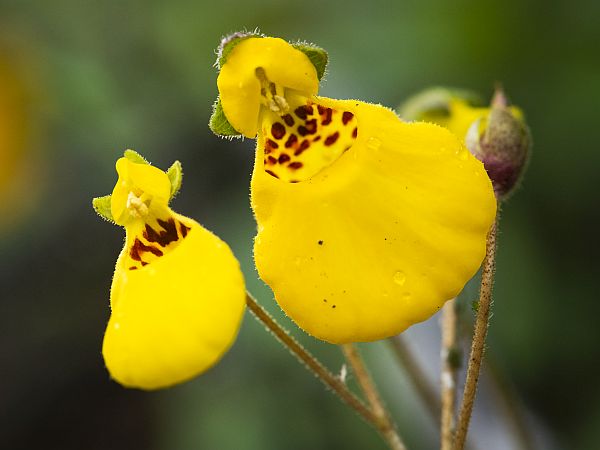
-
For centuries, this area was home to the Tehuelche people, specifically the Aonikenk tribe.
After the arrival of European settlers in the mid 19th century, successive unfortunate events eradicated this and other local tribes. Today there is growing recognition that they were mistreated and taken advantage of.
Another aspect of the European influence in the area is the introduction of the horse. Horseback riding became crucial in the area, and the horse itself even became an essential element in the diet of the locals. The archaeological finding of artifacts such as stone arrows seems to reveal that this was a privileged area for the hunting of guanacos and rheas. In future conservation endeavors we may be able to research more in-depth about the Tehuelche presence in the reserve.
Early in the 20th century, the first forms of tourism and investigation began in this area. Lady Florence Dixie, a Scottish writer and feminist icon was a pioneer in documenting the field and played an essential role in revealing Patagonia to the rest of the world. Through her findings and illustrations, we can assert that the reserve was part of her travels.
Throughout the last century, this area has been home to gauchos and their livestock and horses, they have carried out ancestral European settler’s traditions of managing horses and livestock and have been highly influential in the lifestyle of the region and, in many ways, have paved the way for sustainable tourism in the area. This animal-oriented activity has been part of the region’s identity for a long time. It has given us a local culture that mixes historical features and, unlike many other cultures, is still alive today. Explora has been careful to preserve this culture, inviting community members to participate in exploring and conserving this area through their valuable experience.


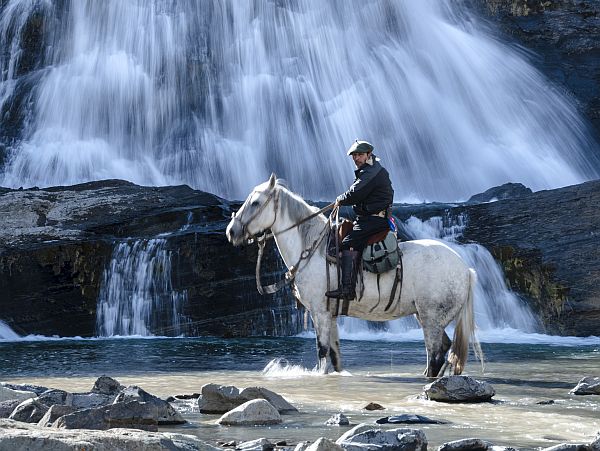
As philanthropy often fades in the long run, we start a venture that joins the virtues of business enterprise and non-profit commitment. The design enables us to expand and accelerate conservation as well as project it in perpetuity.
The reserves’ territory retains 97% of its area only to exploration and conservation, while the remaining 3% is subject to developments that include tourism, leisure, research, and education. In the spirit of a traditional Estancias, the Reserve’s Hull congregates services and activities. From the Hull, a wide range of explorations will be available: both led by our guides with their distinctive training and knowledge, along with self-guided trails with exploration and conservation content supported by technology. Also, as the Gaucho tradition is alive at the Reserve, horse-riding explorations with them are living testimonies of the local way of life.
For the development of ecological planning, the Open Standards for Conservation methodology is used, which provides a complete and integrated methodological approach to strategic planning and conservation management, based on the adaptive management cycle. The Conservation Standards bring together common concepts, approaches, and terminology in conservation project and program design, management, and monitoring in order to help improve the practice of conservation.
Soon, we’ll have more details and will invite you to join our Reserves, where you will be able to participate as an owner, traveler, researcher, visitor, volunteer, or intern.
To plan your visit to the reserve, go to conservationreserves.org



Located near the northeastern edge of the Torres del Paine National Park, The Torres del Paine Conservation Reserve is a majestic land in Patagonia's heart.
Between the Paine Horns and the Sierra Baguales, this is the only area in the region where you can spot both of those iconic landscapes at once, while also representing some of the most symbolic elements of the southern corner of the planet. This valley is situated in a geological stage with views and sights from any point you stand. Depending on the time of year, many wetlands form in the valley area. There’s also Jara Lagoon, a big body of water in the heart of the reserve, where you can usually spot wildlife, especially resident birds. The Rio de las Chinas river, which originates in the Andes, gives life to a branch known locally as the Zamora River that crosses the entire reserve and defines the landscape. The Steppe is a defining feature of the Patagonia landscape, and the Torres del Paine Explora Conservation Reserve is no exception. For decades, this region has seen the development of livestock within the communities, where the gauchos and animal keepers have traveled endlessly through these vast areas. Mountains flank part of the Steppe to then gives way to what is known locally as “La Vega”: a big patch of land, fertile enough to have grass year-round, especially on a rainy year. This area, for decades used for cattle grazing and livestock managing, has stopped such activities to forwarding our purpose of conservation.



In this over 6000 hectare reserve, one can find Lenga's deep forests (Nothofagus pumilio) and Ñire (Nothofagus Antartica).
The strong winds have shaped these endemic trees, telling a story about the land, which also features a vast steppe landscape. You can appreciate the passage of time in the countryside. Some areas where the wind strikes mercilessly are close to barren, while others thrive and can give life to forests and shrub-like vegetation. The altitude and the proximity to mountain chains in the border with Argentina, give the reserve a unique advantage in protecting biodiversity.
A distinctive part of the vegetation landscape is the neneo (Anarthrophyllum desideratum), an endemic ball-shaped shrub, that can withstand extreme weather and direct wind. These shrubs, along with the lengas and grass, change colors and transform this area into a red and yellow stage. Some say it’s the most beautiful time of year to visit.
Many local species of fauna, especially birds, can be found here. Over a hundred resident bird species have been identified, making this reserve one of the richest in the biodiversity of its kind.
In the wetlands and Jara Lagoon, you can spot many species of resident birds, such as flamingos, ducks, and other local species such as bandurrias and ñandues (local ostrich).
Other common species in the region, which thrive in this area, are the guanacos, a local camel present throughout the Andean region, and can survive in different geographical conditions.



For centuries, this area was home to the Tehuelche people, specifically the Aonikenk tribe.
After the arrival of European settlers in the mid 19th century, successive unfortunate events eradicated this and other local tribes. Today there is growing recognition that they were mistreated and taken advantage of.
Another aspect of the European influence in the area is the introduction of the horse. Horseback riding became crucial in the area, and the horse itself even became an essential element in the diet of the locals. The archaeological finding of artifacts such as stone arrows seems to reveal that this was a privileged area for the hunting of guanacos and rheas. In future conservation endeavors we may be able to research more in-depth about the Tehuelche presence in the reserve.
Early in the 20th century, the first forms of tourism and investigation began in this area. Lady Florence Dixie, a Scottish writer and feminist icon was a pioneer in documenting the field and played an essential role in revealing Patagonia to the rest of the world. Through her findings and illustrations, we can assert that the reserve was part of her travels.
Throughout the last century, this area has been home to gauchos and their livestock and horses, they have carried out ancestral European settler’s traditions of managing horses and livestock and have been highly influential in the lifestyle of the region and, in many ways, have paved the way for sustainable tourism in the area. This animal-oriented activity has been part of the region’s identity for a long time. It has given us a local culture that mixes historical features and, unlike many other cultures, is still alive today. Explora has been careful to preserve this culture, inviting community members to participate in exploring and conserving this area through their valuable experience.



Let’s Talk
During the next few months, we’ll be sharing more updates about Conservation Reserves. We’re incredibly excited to start this project and would love to have a chat, if you want to stay updated enter your email below.
Discover Our Destinations
Endless revelations and possibilities await.
